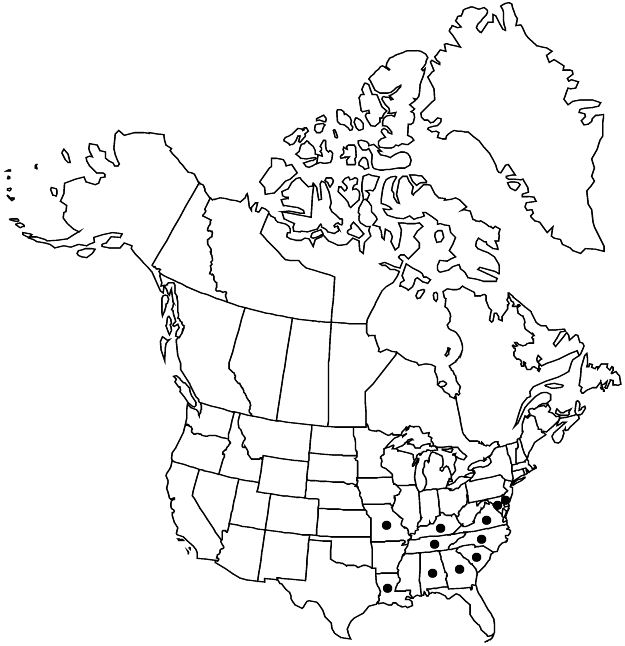Difference between revisions of "Crataegus rubella"
Bot. Gaz. 30: 344. 1900.
FNA>Volume Importer |
FNA>Volume Importer |
(No difference)
| |
Revision as of 20:34, 24 September 2019
Shrubs, 10–40 dm. Stems: twigs: new growth reddish green, glabrous, 1-year old dull reddish brown, 2-years old dark gray, older ashy gray; thorns on twigs absent or few to several, straight, 2-years old nearly black, fine, 3 cm. Leaves: petiole 1 mm wide, length 60% blade, glabrous, glandular; blade ± elliptic or rhombic-elliptic, sometimes ± obtrullate, 2.5–5 cm, thin, base cuneate, lobes 0, or 1 or 2 per side in distal 1/2, sinuses very shallow, lobe apex acute, margins serrate, teeth gland-tipped, especially near base, veins 4 per side, apex acuminate, surfaces glabrous, abaxial veins sparsely hairy young. Inflorescences 3–8-flowered; branches glabrous; bracteole margins short-stipitate-glandular. Flowers 15–18 mm diam.; hypanthium glabrous; sepals 5 mm, margins glandular-serrate; stamens 10, anthers pale purple; styles 2–4. Pomes red to orange-red, obovoid or oblong, 10–12 mm diam., glabrous; sepals on collar, ± reflexed; pyrenes 2–4.
Phenology: Flowering late Apr–early May; fruiting Sep–Oct.
Habitat: Woods and thickets
Elevation: 0–300 m
Distribution

Ala., Del., Ga., Ky., La., Md., Mo., N.C., S.C., Tenn., Va.
Discussion
Crataegus rubella is wide-ranging and common in the southeastern United States. The species is one of the more distinct taxa of ser. Intricatae, with its somewhat narrow leaves with distinctively shaped lobes. Crataegus straminea, somewhat arbitrarily synonymized here, represents uncommon intermediates with C. communis and shares the broader leaf shape with the latter but has two to three lobes per side of the form of C. rubella.
Selected References
None.